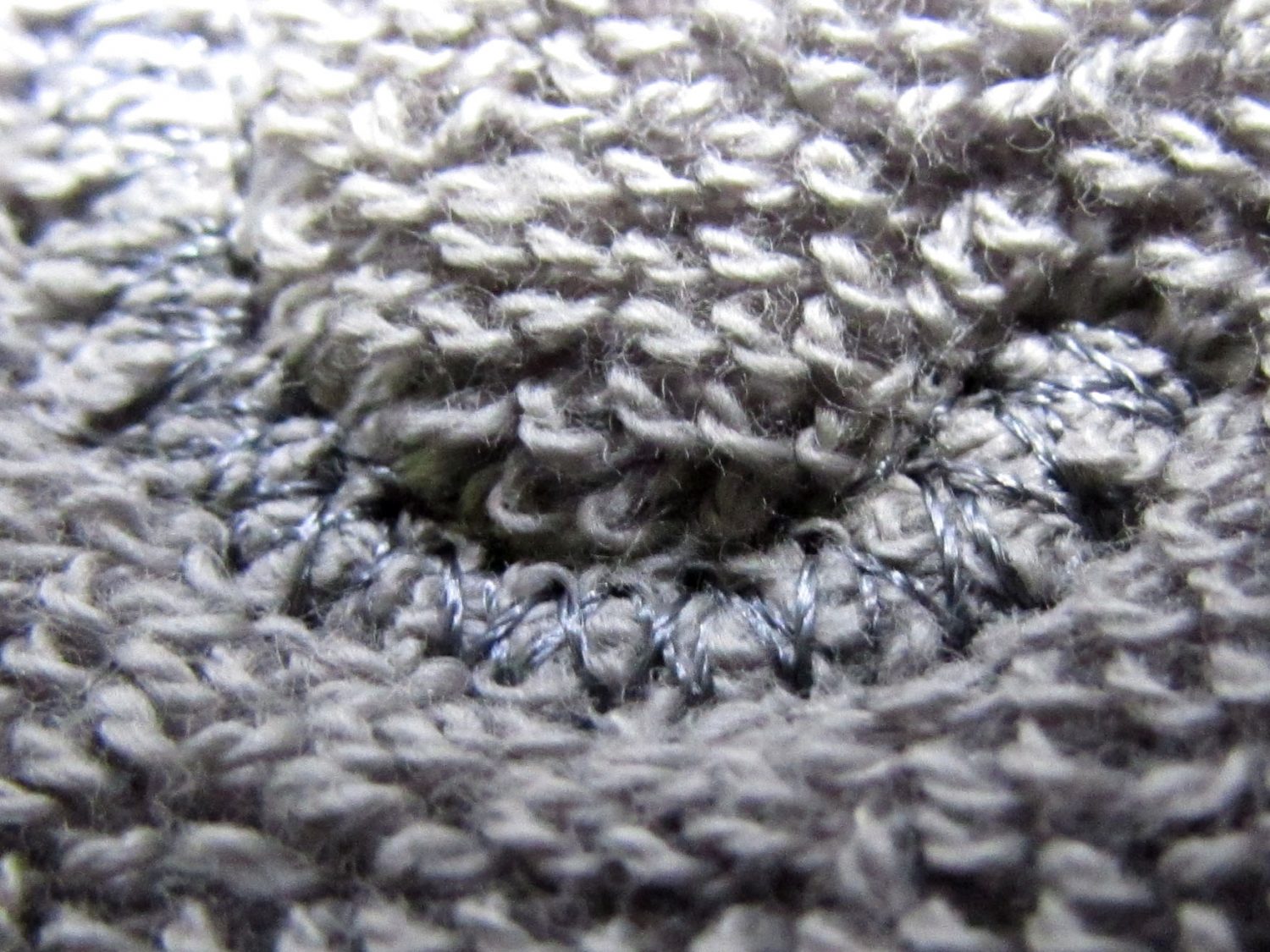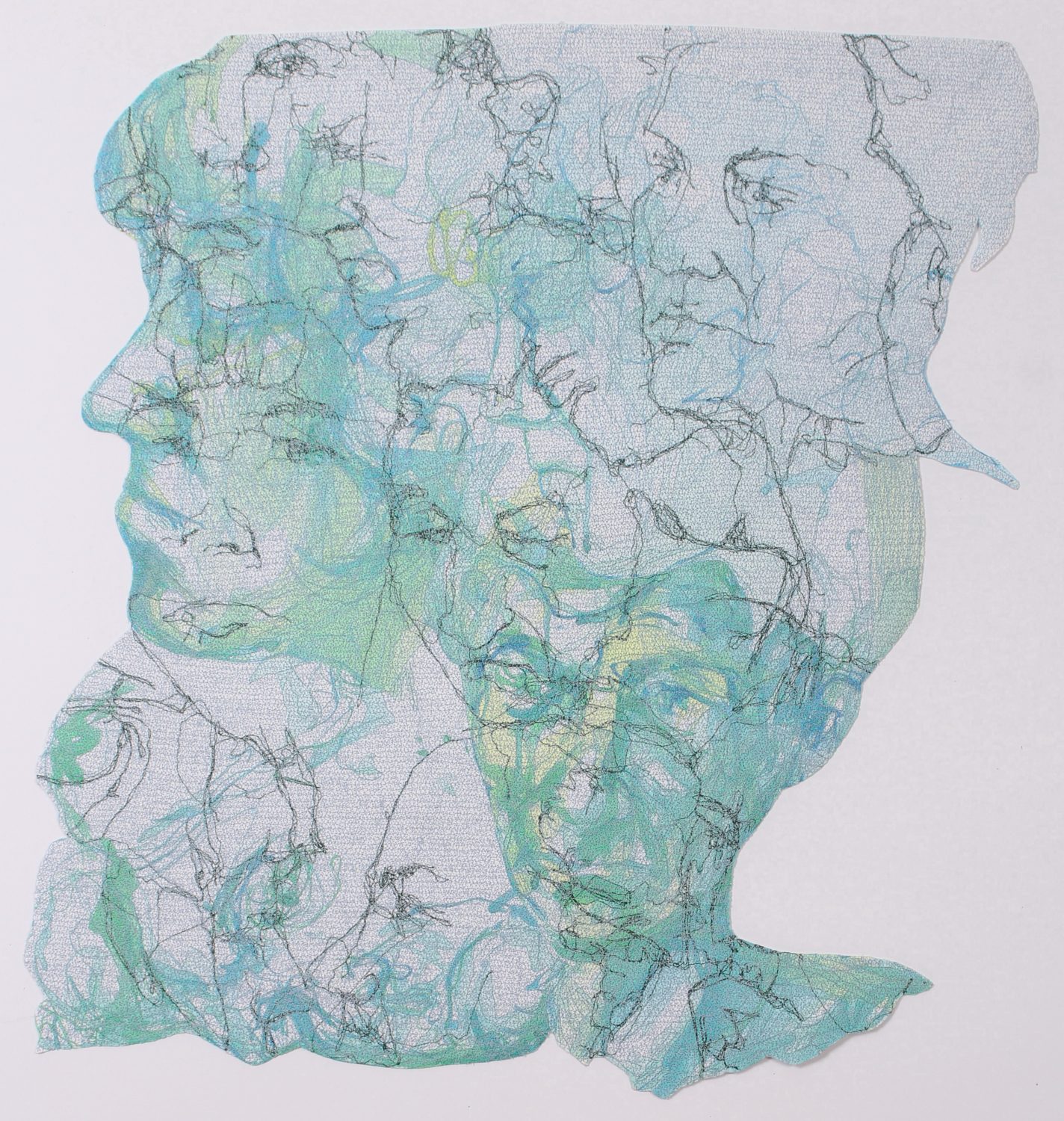What is underlay? If you’ve been around embroidery digitizers, you’ve heard the term, but you may not know exactly what it’s all about. The word itself is fairly obvious, underlay is stitching that lies under the visible top stitching. What isn’t obvious is how crucial underlay is to making that top stitching look good. Underlay has 3 primary functions: to increase the coverage of the top stitching so as to prevent the ground from showing through, to lift stitching above the texture of the ground fabric or the stitching below, and to help hold the edge of top stitched elements to a defined contour. Though underlay sounds complex, it’s really pretty simple. The trick is to think of embroidery as something you build in three dimensions; turn your mental model of embroidery on its side; the fabric is the ‘ground’ on which you construct your embroidery and that makes underlay the ‘foundation’ of your embroidered design. Like a foundation, the physical structure of your underlay will serve to support and shape the things laid on top of it. Other important functions of underlay have less to do with the top stitching than the ground as underlay can also be used to prepare your material for embroidery; either by creating a more appropriate surface for embroidery or by securely attaching your ground fabric to your stabilizer before the top stitching begins to keep it from moving and distorting during the run.

Different types of top stitching use different kinds of underlay, but all make sense if you think of them structurally. Satin stitches commonly use the following types: Center Run underlay, which consists of one or multiple passes of straight stitches running down the center of the satin stitch column, parallel to its edges.

Edge Run or Contour underlay, which consists of a pass of straight stitches runs just inside the edge of each side of the column of stitches, providing a ‘rail’ on which the top stitches can catch and hold as they stitch to maintain a clean edge. Zig-Zag underlay, which consists of a widely spaced zig-zag of long stitches running under the satin column at far less density than the top stitching, making for angles different than the path of the stitches above- related to this is Double Zig-Zag underlay, which consists of two passes of opposing angle Zig-Zag underlay for increased coverage- combined with the Edge Walk, it creates the ‘German’ underlay, named after its use in German lacework- this 1-2 punch is provides edge strength and unparalleled lift and coverage on textured materials. It’s no mistake that I keep mentioning coverage, because properly structured underlay can allow you to reduce the density of your top stitching, sometimes up to 10%, while still maintaining the look of full coverage, allowing you to create faster-running embroideries with a softer hand.


Fill (aka Tatami or Ceeding) stitches also commonly use edge-run underlay to maintain edge contours, but they have a couple of unique underlay types. The first is a Fill or Tatami underlay, which consists of a less dense block of fill stitches that runs under the top stitching at an angle that opposes the angle of the top stitching, often set perpendicular to such. The second type is Webbing or Mesh underlay, which consists of two blocks of underlay of different angles that run under the top stitching, often they are each set at a 45 degree angle to the top stitching so that they are perpendicular to each other, forming what looks like a mesh or net on which the top stitches are built. Both Tatami and Mesh underlay are intended to prevent show-through and lift the top stitching away from the ground, but Mesh underlays can also be used to knock down and trap the nap of highly textured or ‘furry’ materials to create a smoother surface for all types of top stitching.

Underlay can make a tremendous difference to the quality of your embroidery; if letters are sinking into your ground fabric or looking too sparse, rather than over-use density to fill them in or rely entirely on topping materials, underlay can lift them up or help to make stitching look full by keeping the top stitching above the ground and providing some of the thread color without using excess heavy top-stitching. If the edges of your satins are uneven, or saw-toothed, an edge-run can keep stitches from pulling inside of your defined edge and can fill in some of the gaps that occur from the difference between densities on the inner and outer edges of a curve. If your fill-stitched area isn’t giving you full coverage or fibers are sticking through from your ground material, a well-spaced tatami fill can lift it up and provide coverage without adding density to the top stitching.

Stabilizing underlay that attaches the ground to the stabilizer can prevent some shifting of unstable materials, and when done in the proper sequence, moving from the center of the design toward the edges, can smooth out your material like a sheet on a bed, not only preventing ripples and distortion, but proactively creating a smooth and even distribution of the material as it is affixed to the backing.
Mastering underlay may seem like a boring aside compared to dimensional digitizing or color blending, but it is as critical, if not more so, than any top-stitching technique in the struggle to create predictably good-looking, well-running machine embroidery. Whenever I judge a design, there’s no predictor more telling of how a piece will run than what a digitizer has done with their underlay. Moreover, control over underlay can even provide a way to shore up or repair a poorly executed stock design; once you understand how underlay can help with coverage, distortion, and texture, those hidden stitches are yours to use wherever stitch quality fails.

![]() Erich Campbell is an award-winning machine embroidery digitizer and designer and a decorated apparel industry expert, frequently contributing articles and interviews to embroidery industry magazines such as Stitches and Printwear as well as a host of blogs, social media groups, and other industry resources.
Erich Campbell is an award-winning machine embroidery digitizer and designer and a decorated apparel industry expert, frequently contributing articles and interviews to embroidery industry magazines such as Stitches and Printwear as well as a host of blogs, social media groups, and other industry resources.
Erich is an evangelist for the craft, a stitch-obsessed embroidery believer, and firmly holds to constant, lifelong learning and the free exchange of technique and experience through conversations with his fellow stitch-workers. A small collection of his original stock designs can be found at The Only Stitch




